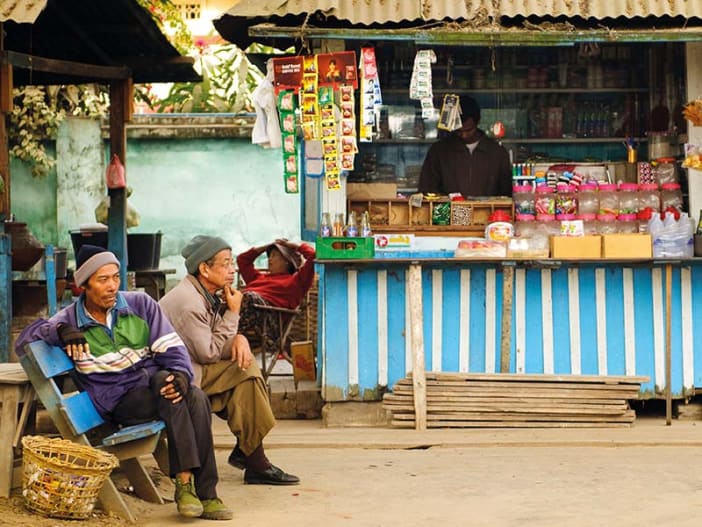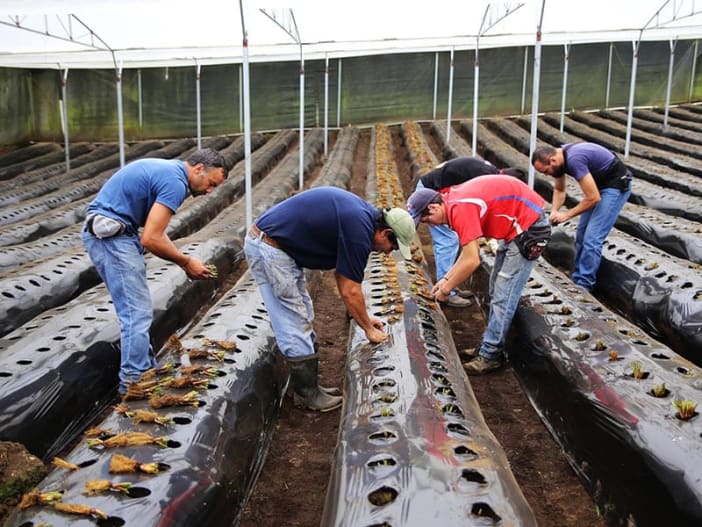by Steve Finamore.
Credit schemes are becoming increasingly important. They are a very useful tool for encouraging development, but a number of things can go wrong. Even when they run smoothly, they are not the answer to every problem faced by the poor.
One of their main aims is to generate income, either for community groups, for households or for individuals. However, income generation should not be seen as the only end result. Self reliance and improving living standards are also important.
Traditionally, many development agencies have promoted income generation through workshops and skills training. These are not always successful. Often they ignore the situation in the local economy – for example, agencies may continue to train carpenters and dressmakers long after the local demand for such skills has been met.
Credit schemes have the same aims as other income generation programmes, but they do not have the same disadvantages. They are much more sensitive to the local economy. They should not create dependency and can – in principle – be self-sustaining.
How they work
There are a number of different models. They all have a fund – usually of money, but sometimes of other resources such as seeds – which comes either from a donor or from the savings of group members. This is lent out to individuals and groups and later repaid so that it can be lent again. In theory such schemes could last for many years without further inputs from donors, so they are very appealing to aid agencies. Such programmes also appeal to those benefiting from the loans. They are no longer receiving handouts: they can set up their own enterprises and use the resources as they think best.
Maintaining the fund
For the amount of money in the credit fund to remain the same, interest and administration charges must be sufficient to cover the total costs of the programme. The most important concerns are bad debts (money lent out which cannot be repaid) and reduction in the real value of the fund because of inflation and/or devaluation. Sometimes staff wages and other costs must also be met by the charges. Only if all these costs can be fully covered by charges made, can the fund be regarded as self sustaining.
Sustaining the credit fund is a useful priority. However, if this is the only way in which success is measured, certain consequences will follow. First, this priority may well conflict with the original priority of encouraging development among the poor. The most effective way to sustain a credit fund is to make large, low risk loans to people who visit you at centrally located offices. In other words, to behave rather like a bank.
Generally the poor are considered a bad credit risk by banks. They possess nothing against which a loan can be secured if the borrower fails to repay. They also tend to want small loans. Some women’s community banks lend as little as $50. If you lend $10,000 to one person your administrative costs are much lower than if you lend 200 people $50 each. Also, credit schemes which benefit the poor have other staff costs. The scheme must be promoted where people live – usually with training, meetings and visits. All these costs (which a bank does not have) must be met by a self-sustaining scheme which benefits the poor.
So having a sustainable fund is a helpful target for a credit scheme but it should not be the main priority. If it is, it will conflict with the main aim of promoting development among the poor.
Types of credit scheme
1. Community banks These are groups within a community which meet together regularly to agree loans from a shared fund and to make savings and repayments.
World Relief Honduras have a good example of a successful women’s community bank. The idea of the bank is promoted at a series of meetings held every afternoon for a week in the local church building. A committee is chosen from among the local women. World Relief provide a fund of $50 per member and each member can take out a loan of up to this amount. It must be repaid at a weekly meeting over 16 weeks with an interest charge of 3%. Members are encouraged to make savings at the same time as they make their repayments. These savings are paid into a separate account. If one or more members fail to make their repayments, the other members of the bank are responsible for them.
The women use the loans in many ways. Some make and sell snacks such as tortillas, others buy and sell cosmetics. Some invest their share into the family business.
The cycle of loans and repayments continues for five years, though members are free to drop out at any time if they wish. During this time the women build up experience in organising their meetings and keeping records. They can also build up a significant amount in savings which, if they wish, can be used to continue the bank when support from World Relief stops.
In 1994 the programme had 113 banks with 4,000 members. Not one bank had failed. World Relief were hoping to double the number of banks. The programme generates confidence among the women. In addition, the weekly meetings provide an opportunity for the women to invite speakers. They can learn about nutrition and health, have literacy and numeracy classes or do Bible studies.
2. Solidarity groups These schemes work by encouraging those who wish to borrow to form solidarity groups where the members guarantee each others’ loans. This will exclude borrowers who are regarded as unreliable by their own communities.
In Guatemala, ASIDE is helping groups of farmers escape the exploitation of wealthy farmers who traditionally bought all crops at harvest time when prices are low, selling them later once prices rise. ASIDE provides loans to the farmers so they are not forced to sell their crops immediately they are harvested. They can now store them and sell them as prices rise. Then they can repay the loan and enjoy an increased income.
3. Individual loans Individuals normally have to provide security for the loan – such as land or machinery that can be resold if the loan is not repaid.
In Lima a carpenter was able to buy a power driven saw which greatly increased the efficiency of his workshop. Now he employs other people in his business.
'Credit schemes which are well planned and administered and are clear about their main priorities, can be one of the most effective tools in promoting development among the poor.'
Discussion questions
- Is it possible for credit schemes to be both self-sustaining and to serve the poorest of the poor? Which should be the higher priority?
- Given the Bible’s teaching on interest (eg: Deuteronomy 23:19), is it ever right to charge interest at a higher rate than that charged by the commercial banks?
- Given the Bible’s teaching on pledges (eg: Exodus 22:25–27), how should unpaid debts be collected?
- How can credit schemes be linked to Christian witness, given the difficulties experienced by church-run schemes?
- Is it ethical to lend to businesses in the informal (unregistered) sector?
- How should the effectiveness of credit schemes be assessed: Jobs created? Fund sustained? Increase in household incomes? Other benefits?
Steve Finamore acts as a consultant to Tearfund on credit schemes and has several years’ experience in Peru. He can be contacted c/o The Latin America Desk, Tearfund, 100 Church Road, Teddington, Middlesex, TW11 8QE, UK.









